Warhammer 40,000 – Through the Ages
The 10th Edition of Warhammer 40,000 was released with Leviathan in Summer 2023 - 36 years after the initial release of the game. And a lot has changed since then.
It hit me with a lot of nostalgia, for multiple reasons. About 25 years ago, I picked up my first Warhammer 40k starter set in 1997, after I initially started tabletop with Blood Bowl. And in 2008 the first review I wrote covered the release of the 5th edition starter set "Assault on Black Reach".
So, please let me take you on a journey through the ages and give you an overview of the different editions and starter sets.

1987 Rogue Trader Logo
The first release of Warhammer 40,000 was in 1987 and called Rogue Trader. It didn't have a starter set, but a hardcover book of which you can even buy a reprint at Warhammer World. The game itself wasn't the battle game we know today, more of a tabletop roleplaying game, with elaborate profiles for the miniatures and closer to a larger skirmish than the platoon sized battles the game covered most of the time.

1993 Warhammer 40,000 2nd Edition Logo
In 1993 the name Rogue Trader was dropped and Warhammer 40k entered a more colourful era - the 2nd Edition. The red-phase, bright colours, goblin green bases, the whole 9 yards. Supported by a starter set, covering Space Marines and Orks, lots of plastics miniatures, card board terrain and a stream-lined game mechanics. This edition would broaden the player base and be for a lot of people "the" Warhammer edition they started with. Army organisation was done by categories and percentage, every unit was either characters, squads or support, and you could spend up to 50% of your points for characters, at least 25% for squads, but not more than 50% of support. This led to hero heavy lists, with the support of a few units.
In the style of the 90s boxed sets, you had a starter kit, which covered the core rules and a separate supplement boxed set (Dark Millennium) for the rules for psikers and further vehicles. In the starter set the conflict of Space Marines (Blood Angels) vs. Space Orks was covered, with two tactical squads on the one side, an Ork mob and Gretchin mob, along with a Killakan. The last one wasn't included as a physical model, but a cardboard stand-in (those were more heavily used with Warhammer Fantasy starter). The miniatures were simple designs, monopose where you usually would just add an arm and backpack. I remember, I bought mine in 1997 from my own money. It was 149 DM back then, which translates into 118 EUR of today's money. Quite the sum for a 13-year-old. Dark Millennium for 80 DM was out of reach for me back then, and as I was late to the 2nd edition, until I decided that I would buy it, 3rd edition came along.

1998 Warhammer 40,000 3rd Edition Logo
But the release of Warhammer 40k 3rd edition in autumn 1998 changed a lot for the game. It moved further grim dark and this logo would stay with us for more than 20 years! The game became a bit larger, reduced on heroes and pushed more units into the game, changing the army organisation from percentages to slots. Compulsory is one HQ choice and 2 troops, with the optional further 1 HQ, 4 more troops, up to 3 Elites, up to 3 Fast Attack and up to 3 Heavy Supports.
After starting 40k with Eldar in 2nd edition (high point costs would mean less miniatures needed, thus a cheaper army project), 3rd edition was when I started with Space Marines, as the starter box had a proper starting army of multi-pose miniatures (the same you'd get from the individual kits) and even included a small vehicle - the Land Speeder. The Dark Eldar were a new army and quite polarising in their design, at least the plastics weren't that great. Yet, replacing the card board terrain with some plastic terrain and overall, a stream lined, less hero-hammer experience, that many people welcomed.
Third edition was around for a while, even introduced further new armies to the game, not just Dark Eldar, but Necrons and Tau as well. And it didn't stop there, we got campaign supplements with Armageddon, Eye of Terror and Cityfight and lots and lots of content over the six years via White Dwarf and Chapter Approved. And while the 90s are kept with a lot of Nostalgia, this early 00s felt like the Golden Years, while you noticed the company was getting more professional, but still closer to the customer from a hobbyist point of view - like Mail Order bit service, Specialist Games etc. Yet, as the new publications were more focused on the rules, less on the lore, there was something missing in direct comparison with 2nd edition. Codices became much smaller, more present army list, more coloured pages, but the fluff on the armies was reduced, at least in the amount it was covered in the books. For example Codex Ultramarines was 98 pages, the Space Marine Codex of 3rd edition was only 48 pages. Even the campaign supplement on Armageddon was more of a booklet with its 32 pages. Something that could have been a gift with the White Dwarf, not a release of its own.
2004 the 4th edition of Warhammer 40,000 came along, yet the rule changed were minimal. A lot of content from the 3rd edition was compatible and could be used until the relevant updates were released via the Codices. The new starter set, Battle for Macragge was a cheap entry level product. The terrain was nice, but miniature wise it was small, only a Tactical Squad for the Space Marines, but the Tyranids had quite the swarms to begin with. It was priced around 50 EURs and pushed into a lot non-FLGS to be present to a broader audience. And there were sets that included paints, to be more starter friendly.
4 years later, in 2008, the 5th Edition of Warhammer 40,000 was released. The core rules stayed the same, while major rule changes include the addition of running, updating the rules of templates, and different handling shooting, with a "true" line of sight, which changed the usability of cover and interaction with buildings. Regarding the background information, the 5th edition goes into greater detail for each race, the Codex supplement became thicker - for example, Codex Space Marine of 5th edition was 148 pages, while most of the others were around 100 pages. Tau, Eldar and Orks were completely skipped in 5th edition and had to use their 4th edition books until their updates in the 6th edition. Yet, the Ork Codex of the 4th edition was released so late in 2008, that it was more of a 5th as 4th edition release and as such supporting the new Assault on Black Reach starter set, which introduced proper armies in starter sets, and not just a squad or two on each side. The Space Marines had Tacticals, Terminators, a Captain and even a Dreadnought, while the Orks had regular Orks, Nobs, a Waaaghboss! and Killakoptaz, who were for a long, long time only available via this boxed set. Fun Fact: Assault on Black Reach was the first item I reviewed when I started my "professional" wargaming carrier.
We entered the 4 years lifetime of editions, and got the 6th Edition in 2012 just in time. But it wasn't that well received and got replaced incredibly briefly in 2014. In 6th the rules widely stayed the same, but the army organisation was enlarged for allies and fortifications. When the 7th edition was released, the army organisation was changed, introducing unbound method, where you could take whatever you want up to a certain point value, along with a battle-forged method, with detachments, which worked similar to the old variant, but was more restricted / defined on what units you could take. Similar to Bolt Actions Theatre selectors, if you're familiar with them.
The starter set was the same for both editions, with the rules updated in the later release. With 7th edition in addition to the starter set battle boxes were released, who covered certain conflicts and were meant to set you up with certain armies, not directly set you up for the game itself. And a very entry-point set with Battle for Vedros, re-using the 5th edition Assault on Black Reach sprues. But the main set was Dark Vengeance giving you Dark Angels (mixed with Ravenwing, Deathwing and regular Dark Angels) as well as a mixed Chaos force, with cultists, Chaos Space Marines and even a Hellbrute.
With the 8th Edition of Warhammer 40k in 2017 a new age dawned on the World of Warhammer. The Space Marines crossed the Rubicon Primaris and replaced the regular, now called First-Born Space Marines in the new Starterset Dark Imperium. We continue the conflict of Space Marines vs Chaos Space Marines but the Word Bearers are replaced by very well-done Death Guard. While Dark Imperium was the big box, it was split into multiple smaller sets, with lower pricing to make it easier to join.
The 8th edition moved the game further into data cards, having compact overviews for the units, and similar with the army composition, which went stronger on the detachments, along with the introduction of Command Points that you could spend on stratagems in the game. Depending on your army structure you would receive additional CP. And while the army building might be simplistic at first glance, the units come with keywords attached and these decide if certain effects, detachments etc. apply to them or not. So, for example a HQ models who grants re-rolls does not necessarily grant them for the whole army, but only those units with a specific keyword. And as it is important to have eye on those keywords and unit profiles, they moved the overview from just codex entries towards unit profiles (called Datasheets), where you would find all the information you needed (partially even directly included in the stat-line). This meant less searching through the rulebook, less adding / subtracting values but directly using the information from the unit profiles.

2020 Warhammer 40,000 9th Edition Logo
With the release of the 9th edition in 2020, the design got an overhaul. Still being grim dark, but even more starter friendly. And this design is kept with the latest 2023 10th Edition of Warhammer 40,000. And where Dark Imperium already was quite popular as a starter set, the new 9th edition set Indomitus - covering the conflict between Necrons and (Primaris) Space Marines - didn't let you down either. The combination of both sets would give a Primaris player more than just a core to play with, and the quality of the models was impressive, with dynamic poses.
The game was further stream lined, some balancing issues regarding the detachments were addressed, yet something that I thought was the most interesting was the narrative game play of Crusade Armies, where you could collect XP to further improve your army / its units. Another rule that had impact on the game was the changed coherency rules for units with more than 6 miniatures, as they needed to be closer to more miniatures than in the past, causing for denser unit placement (of "larger" units).
And now in June 2023, we see Leviathan - the 10th Edition of Warhammer 40,000, another starter set giving you Space Marines in conflict with a Xenos race - in this case the Hive Swarm Leviathan, the second time after Battle for Macragge that we have Tyranids in a starter/launch set. As you know, we don't talk meta on this blog, so let the new rules arrive, you can download them for free from Warhammer Community, there are plenty of pages who cover in-depth about the rule changes. And for the miniatures of the new set, we already wrote in detail about the Space Marine part.
In addition, a good overview on the tone of each of the editions gives you the Codex Space Marines over the years as well.
Roughly 35 years of Warhammer 40k and only a few days until the 10th Edition is delivered. I hope that there will be restock and everybody who wants one gets their hands on a set. Enjoy the new / updated rules, enjoy the miniatures, but most importantly enjoy the time you spend with your hobby.

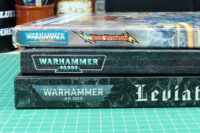
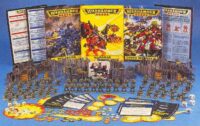
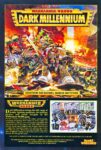
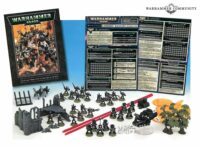
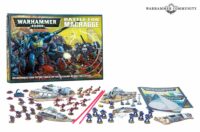
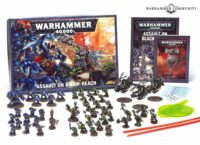

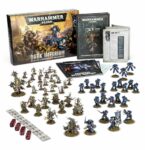


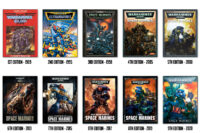












November 19th, 2024 - 10:01
I found this article interesting. I started in 1995 with 2nd ed but left for a while coming back 4 years ago. I came here looking for a quick explanation of the difference in editions. Thanks very much. If you haven’t already done so, may I suggest a review of the Imperial Guard (Astra whatnow? Son you’re in the Guard), codicies, including the Catachan subcodex. Thank you.
November 19th, 2024 - 15:35
This topic will be visited towards my 2nd edition Imperial Guard project, but that’s something for the next decade.